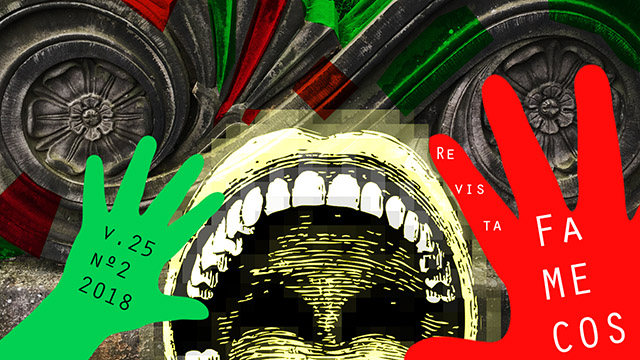The notion of space and the practices related to media within the contemporary rural
DOI:
https://doi.org/10.15448/1980-3729.2018.2.28325Keywords:
Cultural studies, Communication technologies, Rural areaAbstract
In the research Communication technologies in daily practices: the case of families related to the agroindustrial tobacco chain, developed in the city of Vale do Sol (RS), one of the strategies for collecting information in the field was to focus on the interviewees’ means of communication predilection. The questions "what is your favorite mean of communication?" and "where do you usually use it?" have spawned questions about space, taken here as a category of analysis (Harvey, 2006). From the tensions and spatial complexities, such as the relations between rural and urban, or house and street, a problematization is proposed to understand the uses and appropriations of communication technologies (Silverstone, Hirsch, Morley, 1996). For this purpose, we consider the physical aspect of families' dwelling and work places, and the abstract, as the symbolic implication of another duality: modernity and tradition. Thus, we observe dynamics of objectification in the home, through different forms of spatial differentiation, implicated in private or shared consumption processes and also in generational gap.
Downloads
References
CARNEIRO, Maria José. Do rural como categoria de pensamento e como categoria analítica. In: CARNEIRO, Maria José. Ruralidades Contemporâneas: modos de viver e pensar o rural na sociedade brasileira. Rio de Janeiro: Mauad X/Faperj, 2012.
DAMATTA, Roberto. A casa & a rua: espaço, cidadania, mulher e morte no Brasil. Rio de Janeiro: Guanabara Koogan, 1991.
HAESBAERT, Rogério; LIMONAD, Ester. O território em tempos de globalização. Etc, espaço, tempo e crítica: Revista Eletrônica de Ciências Sociais Aplicadas e outras coisas, Rio de Janeiro, v. 1, n. 2 (4), p. 39-52, 15 ago. 2007. Disponível em: http://www.uff.br/etc/UPLOADs/etc%202007_2_4.pdf. Acesso em: 27 set. 2016.
HARVEY, David. Space as a keyword. In: CASTREE, Noel; GREGORY, Derek (org.). David Harvey: a critical reader. Cambridge: Blackwell Publishing, 2006.
MARTINS, José de Souza. Sociologia da fotografia e da imagem. São Paulo: Contexto, 2009.
MORLEY, David. Home territories: media, mobility and identity. Londres/Nova Iorque: Routledge, 2000.
ORTIZ, Renato. Universalismo e diversidade: contradições da modernidade-mundo. São Paulo: Boitempo, 2015.
SILVA, Mozart Linhares da. Educação e etnicidade na região de Santa Cruz do Sul - RS. Revista Eletrônica de Educação, São Carlos, SP: UFSCar, v. 6, n. 2, p. 340-354, nov. 2012. Disponível em: http://www.reveduc.ufscar.br. Acesso em: 27 set. 2016.
SILVERSTONE, Roger; HIRSCH, Eric; MORLEY, David. Tecnologías de la información y de la comunicación y la economía moral de la família. In: SILVERSTONE, Roger; HIRSCH, Eric (org.). Los efectos de la nueva comunicación: El consumo de la moderna tecnología en el hogar y em la família. Barcelona: Bosch, 1996. p. 39-
WINOCUR, Rosalía. Robinson Crusoe ya tiene celular: la conexión como espacio de control de la incertidumbre. México: Siglo XXI, 2009.
Downloads
Published
How to Cite
Issue
Section
License
Copyright
The submission of originals to Revista Famecos implies the transfer by the authors of the right for publication. Authors retain copyright and grant the journal right of first publication. If the authors wish to include the same data into another publication, they must cite Revista Famecos as the site of original publication.
Creative Commons License
Except where otherwise specified, material published in this journal is licensed under a Creative Commons Attribution 4.0 International license, which allows unrestricted use, distribution and reproduction in any medium, provided the original publication is correctly cited.






